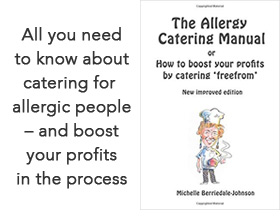An extract from an article by Dr Hugh Sampson in Food Allergy News, the journal of the Food Allergy and Anaphylaxis Network.
'In trying to understand what makes certain foods more likely to cause allergy, scientists have identified particular proteins within foods and determined their exact compositions.
'Both milk and eggs are composed of over 20 different proteins, but relatively few proteins are responsible for allergic reactions: in milk - casein and Betalactoglobulin; in egg - ovomucoid and ovalbumin. Proteins are composed of various combinations of amino acids which can be pictured as a pile of chains with each link representing one of 20 different amino acids.
'IgE antibodies recognise specific sequences of 8-10 amino acids, known as ‘epitopes’. Epitopes may be comprised of a sequence of amino acids along the chain (‘sequential epitope’) or as a sequence of amino acids from adjacent parts of the chain as it folds back upon itself (‘conformational epitope’).
'The conformational type of epitope is dependent upon the protein retaining its native shape, because if the shape of the protein is changed, the amino acids coming together to make up the conformational sequence are no longer able to link together and the epitope disappears. Cooking and digesting food proteins are two common ways to destroy conformational epitopes.
'However cooking and digesting will not destroy sequential epitopes and so patients with IgE antibodies to these epitopes will experience an allergic reaction regardless of whether or not the food is cooked. Only a minority of patients make large amounts of antibody to sequential epitopes, which explains why some milk and egg allergic patients tolerate baked products containing small amounts of milk and egg protein. Recent evidence also suggests that patients with large amounts of IgE antibodies to sequential epitopes do not ‘outgrow’ their allergies.
'These observations have led to the development of new blood tests that should be able to determine who will ‘outgrow’ their allergy and whether they are likely to tolerate small amounts of ‘baked’ milk or egg.
'In addition, knowing the make-up of these sequential epitopes is enabling scientists to genetically alter these proteins to develop vaccines. Future research should allow us to accurately diagnose most milk and egg allergic patients with simple blood tests and provide novel vaccines that would enable us to cure and eventually to prevent these allergies.’
First published in July 2004
More research reports on causes of allergy
Top of page |










